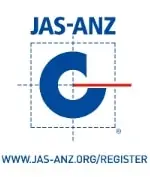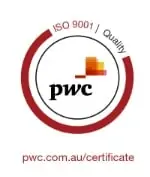What is ISO 45001:2018? Learn about the Occupational Health and Safety (OHS) Standard
Published on: June 24, 2022
Understand the requirements of the ISO Management System Standard that addresses work-related hazards and risks, which can prevent injuries and illness and help save lives
The United Nations Global Compact estimates that 2.78 million workers die from occupational accidents or work-related diseases each year, while another 374 million workers suffer from non-fatal occupational accidents. To put this into perspective, there are more than 7,600 fatalities occurring from dangerous working conditions every single day!
These figures are very concerning, especially considering these deaths could have, and should have, been prevented. This is where ISO 45001:2018, the international Occupational Health and Safety (OHS) Standard, also known as Work Health and Safety (WHS), is able to support organisations with a Management System framework that provides a risk and opportunity based approach to preventing harm to workers.
Although it’s a relatively new standard, ISO 45001:2018 supersedes OHSAS 18001 and AS/NZS 4801 and builds further on the crucial framework these previous standards introduced, to ensure all workers have a safe and healthy workplace. It promotes consultation for transparency and building trust throughout an organisation’s operations and supply chain. Implementing and achieving certification to the OHS Management System Standard reflects the organisation’s commitment to their employees health, safety and wellbeing. It also demonstrates their efforts of continually working towards creating a better, safer workplace.
Continue reading to learn more about ISO 45001:2018, and its requirements and benefits.
What is ISO 45001:2018?
The ISO 45001:2018 Occupational Health and Safety (OHS) Standard provides a framework for managing and preventing work-related injury and illness by identifying risks and opportunities to eliminate hazards and minimise risks (including system deficiencies). The standard assists organisations of any size, type, or industry in taking effective preventative actions to promote a safe and healthy workplace, while also effectively addressing legal and ethical concerns.
The hazards and risks which align with poor working conditions may be a result of a multitude of factors: governance gaps, failure to comply with the law, insufficient resources, scarce knowledge, unsustainable business practices, and the lack of a culture of prevention, just to name a few. Effective implementation of the ISO 45001:2018 Standard should provide a systematic approach to enable organisations to address and manage these OHS risks.
The Safety Management Standard approach emphasises the responsibilities of those in positions of authority, and highlights how all stakeholders in the organisation should participate, to ensure effectiveness. The intended outcomes of an OHS Management System include:
Other ISO OHS Standards
Unlike the other core ISO Management System Standards, the ISO 45001 Standard doesn’t yet have a comprehensive “ISO 45000 Family of standards”. ISO 45001:2018 was the only standard for this topic until recently, when an additional two standards were released to complement an organisation’s safety management:
A business will not be able to get certified to either one of these two new standards, as they are guidelines only.
As at the time of publishing this blog, the following additional guidelines standards are also under development:
What are the benefits of ISO 45001:2018?
All stakeholders benefit from a safer and healthier workplace, from employees to managers, business owners and external suppliers. Consequently, the benefits of successfully implementing ISO 45001:2018 and achieving Certification to this standard, will positively influence many areas of the organisation, such as:
Expert Tip
ISO provides a free brochure about the Occupational Health and Safety Management System Standard, and what it can do for your organisation. Click here to learn more.
What are the ISO 45001 requirements?

ISO 45001:2018 is structured similarly to other core management system standards, such as ISO 9001:2015 and ISO 27001:2013. This facilitates one integrated management system for an organisation, that can meet the requirements of multiple management system standards.
The Occupational Health and Safety Management Systems Standard is comprised of 10 clauses, which are as follows:
Clause 4: Context of the Organisation – The organisation will determine all external and internal parties, as well as issues that can impact the intended outcomes of its OHS Management System. This includes understanding the needs and expectations of employees and other stakeholders, and determining the scope of the OHS Management System.
Clause 5: Leadership and worker participation – The standard requires top management to be responsible and accountable for preventing work-related injury and ill-health. Top management must demonstrate leadership and commitment concerning the OHS Management System, and promote consultation with and participation of workers through clear communication, and allocating appropriate resources to support the safety culture.
Clause 6: Planning – This clause outlines actions to address risks and opportunities. It requires that the organisation keeps documentation about their OHS objectives and determines what will be done. Organisations should also demonstrate project timelines, roles and responsibilities, as well as how they will measure results. The plan must take into consideration the identified issues and hazards, in addition to regulatory requirements.
Clause 7: Support – The organisation should determine and provide the resources needed for establishing, implementing, maintaining and continually improving the OHS Management System. This includes human, infrastructure, and financial support, ensuring employees know all relevant information required to meet the ISO OHS standard’s requirements.
Clause 8: Operation – The business shall plan, implement, control and maintain the processes needed to meet the requirements of the OHS Management System. This includes any temporary or permanent changes that could impact the OHS performance, the procurement of products, services and contractors, and the establishment of a process for emergency readiness and response.
Clause 9: Performance Evaluation – There must be a process for monitoring, measurement, analysis and performance evaluation of the OHS Management System. Internal audits and top management reviews are required to ensure the Management System’s ongoing improvement, adequacy and effectiveness.
Clause 10: Improvement – The organisation should be committed to continually improving its management system, take a proactive approach when seeking new OHS opportunities, and implementing the necessary measures to address any incidents and nonconformities that may occur.
Where to start with implementing the requirements of the ISO 45001:2018 Standard?

ISO 45001:2018 provides a robust framework for managing OHS risks and opportunities. Interpreting the requirements and matching them with the businesses needs and resources can be overwhelming. Getting assistance from a professional ISO Management System Consultant is often the best way to implement the requirements of and achieve certification to a Management System Standard. The consultant can help you to integrate the requirements of one or more ISO Management System Standards into your existing business systems and operational processes.
Regardless if an organisation decides to implement the requirements of the ISO 45001:2018 Standard by itself, or outsource it to a professional consultant, it’s recommended that the organisation has a licensed copy of the standard document. This is so everyone involved in the project is familiar with the requirements. In addition, external auditors from the Conformity Assessment Body may ask if you have it as a reference, as it is important to be aware of the requirements in order to effectively implement them.
The cost and timeframe to implement an OHS Management System will vary depending on the size of the organisation, the complexity of its operations, and the systems that are currently in place. Once the requirements of the standard are successfully implemented, the business can go for the Certification Audits with an Accredited Conformity Assessment Body to achieve its ISO 45001:2018 Certification (read more about the certification process here).
It’s also important to consider that conducting internal audits of the Management System is a requirement to achieve and maintain certification to an ISO Management System Standard. As a business owner or manager, you can benefit from qualifying your team to conduct these audits.
Andressa (alias Andy) is the General Manager of ISO Certification Experts and ICExperts Academy, heading our Marketing department and coordinating the internal improvement initiatives and projects. With an MBA in Project Management, and over 10 years of experience in customer service and project management across many industries, she brings valuable knowledge to the business and our operations. Alongside her professional expertise, Andressa holds a genuine passion for sustainability and the environment.
All information on this blog site is for informational purposes only. As this information is based on our professional experience, opinion, and knowledge, we make no representations as to the suitability of this information for your individual business circumstances. Especiality Pty Ltd trading as ICExperts Academy and all related businesses and brands will not be liable for any errors, omissions, legal disputes or any damage arising from its display or use. All information is provided as is, with no warranties and confers no rights.
We will not be responsible for any material that is found at the end of links that we may post on this blog site. The advice, ideas, and strategies should never be used without first assessing your own personal business situation or seeking professional and/or legal advice. Information may also change from time to time to suit industry and business needs, requirements and trends.


















